Leaving Nothing To Chance In The Quest For The Best Extra Virgin Olive Oil
Updated October 9th 2023

Summary:
- Moroccan extra virgin olive oil is quickly gaining popularity amongst health-conscious consumers, and for good reason.
- This golden oil is packed with heart-healthy monounsaturated fats, which have been shown to lower LDL (bad) cholesterol levels and reduce the risk of heart disease.
- Additionally, Moroccan olive oil has high levels of antioxidants, which can help protect against inflammation and oxidative stress.
- Not only is it good for you, but it also has a delicious, fruity flavor that adds depth to any dish.
- But making the best olive oil in the world starts with growing the best olive.
Contents:
- Why Including Morocco Gold Extra Virgin Olive Oil In Your Diet Is Important
- Growing The Best Olives For Extra Virgin Olive Oil
- Why Extra Virgin Olive Oil From Morocco Is The Best In The World
- Releasing The Flavour Of The Best Olive Oil
- The Annual Cycle To Achieve Best Olive Oil
- Harvesting To Maximise Polyphenols In Our Extra Virgin Olive Oil
Why Including Morocco Gold Extra Virgin Olive Oil In Your Diet Is Important
In a world where unhealthy diet and lifestyle is a growing problem, there is a need for a better, healthier way of living. The consumption of saturated fats, for instance, is one of the factors that contribute to this problem. Fortunately, there is a solution that is not only delicious but also beneficial for your health – extra virgin olive oil, widely considered the best olive oil. Packed with polyphenols, extra virgin olive oil has many olive oil benefits that can help prevent illness and improve overall health. The Mediterranean diet is one of the most popular diets that include extra virgin olive oil as its primary source of fat. However, to truly reap the benefits, it is essential to combine it with an overall healthy lifestyle. So, when making nutritional choices, don’t forget the importance of consuming the best olive oil for a healthier lifestyle.
Growing The Best Olives For Extra Virgin Olive Oil
In order to produce the best-tasting and most nutritious olive oil, it is important to start with high-quality olives. The best olives for flavour are typically harvested early in the season, before they have a chance to ripen fully on the tree. These olives tend to be smaller and more delicate, with a light, fruity flavour. For a heartier, more robust olive oil, look for olives that have been allowed to ripen longer on the tree. These olives will have a deeper colour and a more intense flavour.
Why Extra Virgin Olive Oil From Morocco Is The Best In The World
Olives that are grown in warm climates, such as Morocco, will also produce a fuller-bodied olive oil. Morocco has been producing the best extra virgin olive oil for millennia, from the time of the Romans. The existence of centenary trees and traditional presses (maasras), testify to the antiquity of olive oil production. Indeed, olive oil has long been considered a noble food by the local population. So, the Moroccans know a lot about how to cultivate the best olives for olive oil production.
In terms of health benefits, the best olives for olive oil are those that are rich in polyphenols. Polyphenols are antioxidants that can help to protect against heart disease and cancer. Olives that are high in polyphenols tend to be darker in colour and have a more bitter taste. When shopping for olive oil, be sure to check the label to see how many polyphenols the oil contains. The higher the number of polyphenols, the healthier the olive oil is likely to be.
Releasing The Flavour Of The Best Olive Oil
For many lovers of extra virgin olive oil, it’s all about what happens when their bottle is opened and its contents released on to salads, bread and roasts. At Morocco Gold, however, the true magic behind producing the best olive oil in the world starts from the moment a seed is planted.
Morocco Gold olives begin their journey to your plate in a very special valley, nestled in the foothills of Morocco’s Atlas Mountains which benefits from a micro-climate that contributes to the unique flavour of this finest extra virgin olive oil.
Our customers are increasingly interested in the source, provenance and authenticity of our wonderful Morocco Gold extra virgin olive oil and how our olives are grown.
So, we’re delighted to share some information on the life cycle of this most wonderful of fruits.
Flowering

Olive trees produce fruiting shoots called inflorescences, which originate at the axil of a leaf. Each inflorescence will typically contain 10 to 30 flowers depending on the type of olive. The number of flowers that then mature into olives dependent on a number of factors.
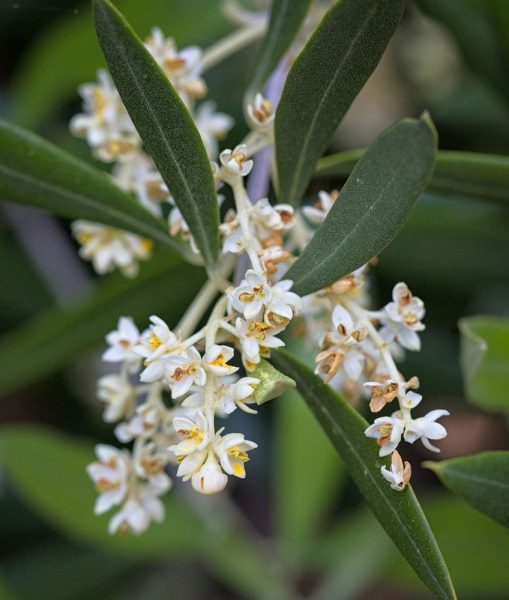
The ‘Goldilocks’ Zone
Olive trees require temperatures that are – not too hot – not to cold – but just right!. They require winter cold to achieve normal blooming and fruiting. The optimal degree of cold winters is dependent upon the origin of the olive cultivar (e.g. Eastern Mediterranean vs. Southern Europe). Strong winds, hot temperatures, and freezing temperatures can negatively impact fruit set. Particularly cold springs will negatively impact harvest by delaying blooming and increasing flower abnormalities. Localized winter temperature rises due to development around the tree such as buildings and asphalt can act as a wintertime heat sink, thereby inhibiting fruiting.
The remote, elevated valley in the foothills of the Atlas Mountains provides the ideal balance of temperature throughout the olive growing season.
Blooming
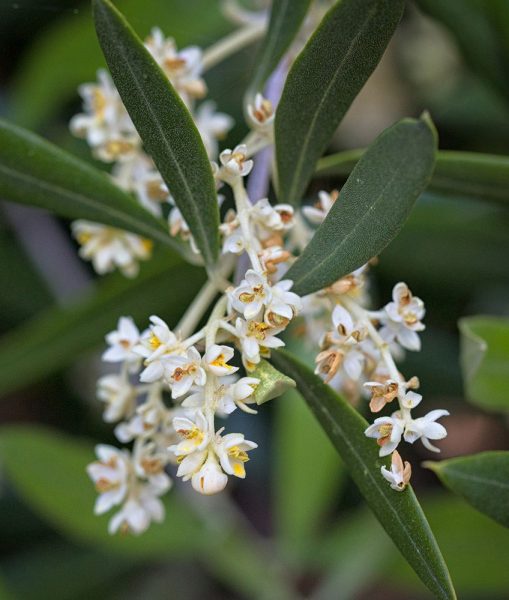
Before flowers bloom, they go through a differentiation period that has to do with the sexuality of the blooms. This generally takes place March through May and results in one of two results (although there is some new research indicating that there may be a third possible result).
Perfect Flowers
Flowers which have both stamen (the male part) and pistil (the female part)
Staminate Flowers
Flowers which have only stamens and lack a pistil (which apparently have been aborted)
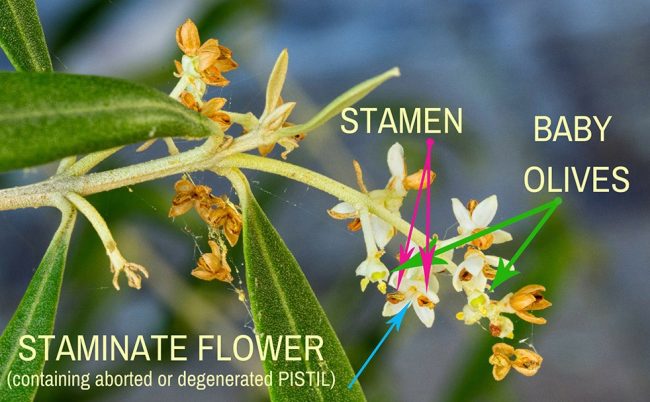
Why are there staminate flowers and not just perfect (hermaphroditic) flowers? There are a number of theories and reasons, but the main ones are thought to be :
- It takes a great deal of energy to develop the pistil (or ovule – think of this like the human ovum). The tree has to moderate the number of pistils it is able to develop with the nutrients available to it.
- In order to pollinate the pistil, the tree is dependent on a high volume of stamens – stamens don’t have the same nutrient requirements as the pistils, so the tree exercises her “nutrient economizing” by terminating pistils (ovules) as needed.
Orchard stress, in particular water stress, can negatively impact this portion of development. In competitions between flowers and leaves, the leaves win, and the first floral part to fail is the pistil. A moist soil profile during this period can help prevent this kind of stress.
Pistil abortion occurs naturally and is not perfectly understood. Pistil formation must compete with vegetative growth for nutrients at a time when both are working their hardest. In addition, following a big harvest year, the tree’s nutritional resources have been depleted. Yet, if only 1% – 2% of the flowers are able to set fruit, the grower will still enjoy a satisfactory crop. If a tree is blooming, but no olives develop, this could be because of a mechanical disruption to fruit set. Wind, rain, and/or hail can knock off the blooms just at this critical time of the year.
Pollination
According to the Olive Production Manual (University of California, Agriculture and Natural Resources), “…some 500,000 flowers are present in a mature tree…” at time of full bloom. Within two weeks of full bloom, most of the flowers will have failed, with only 1 – 2% then maturing into full-grown fruit.
Self-Pollination
Because of their geometry, olive flowers self-pollinate. The anthers (located at the top of the filaments attached to the stamen) drop pollen on the stigma of the pistil. The pollen grains germinate and olive growth is underway. Though not necessary for pollination, wind and bees may aid in pollination by disturbing the flower causing pollen to fall from the anther to the stigma. Many olive varieties cannot self-pollinate. For these trees, olive pollen is primarily carried by wind. Bees may play a minor role in pollination.
Cross Pollination
Cross-pollination occurs when wind or a bee transfers pollen from one flower to the stigma of another flower. As bees are not particularly fond of olive flowers, they do not typically play a large role in the olive orchard.
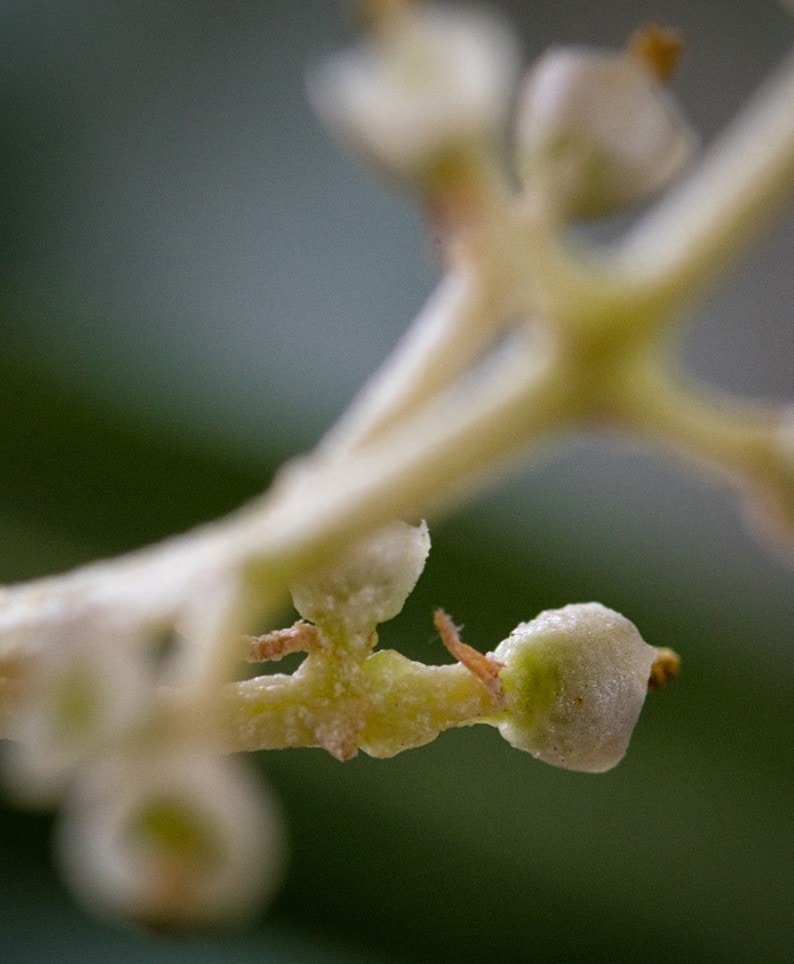
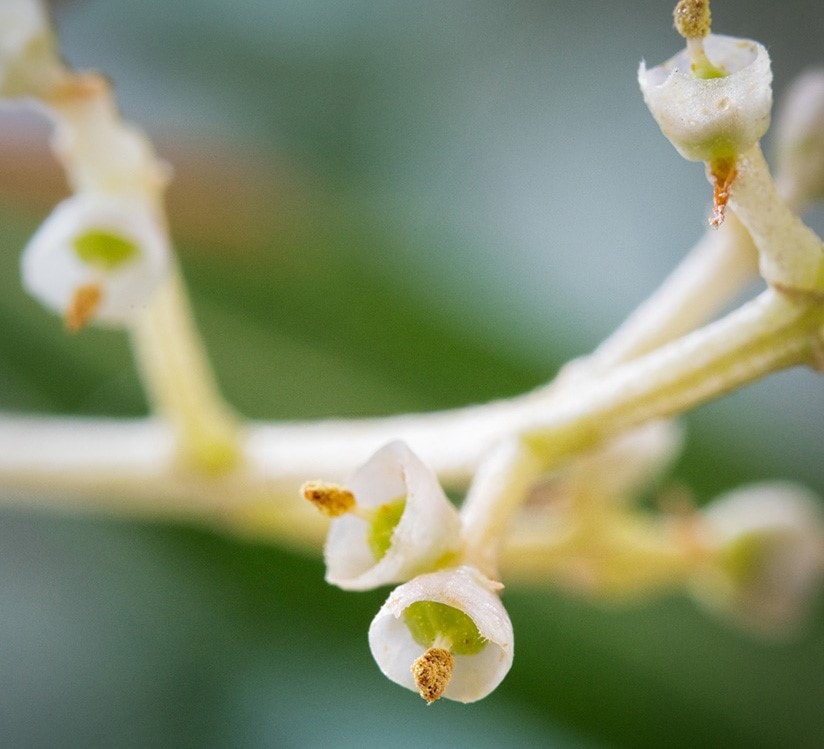
Stress – It’s Not Good For Olives Either!
As with us humans, stress on the olive tree and it’s fruit will be detrimental. This may be caused by a number of factors including too much or too little pruning, shortage of water – when the tree will favour the leaf over the fruit and pest infections.
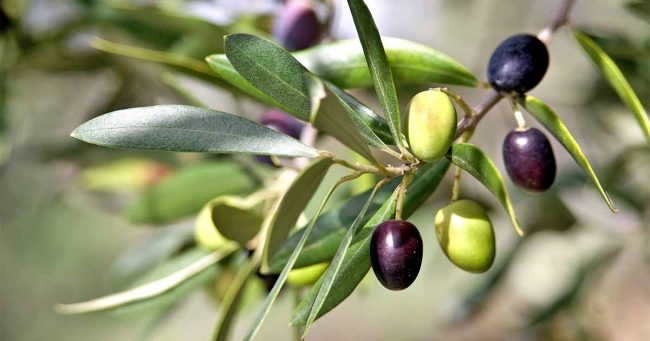
The Annual Cycle To Achieve Best Olive Oil
Ground work and tillage is carried out once or twice a year: once in winter to facilitate rainwater infiltration into the soil, and in spring to rotate the soil. Any planting is done at the beginning of spring.
In addition to natural rainfall, which is generally sufficient in the geographical area, trees are irrigated as needed during the period of vegetation of the olive tree, normally until the end of September.
Fruiting sizing and assessment of the maturity of the olive is carried out annually. The planned date of harvest is agreed based on the maturity index of the olives, also the generations of experience of the olive farmers. Harvesting will then normally take place between the end of October and beginning of December.
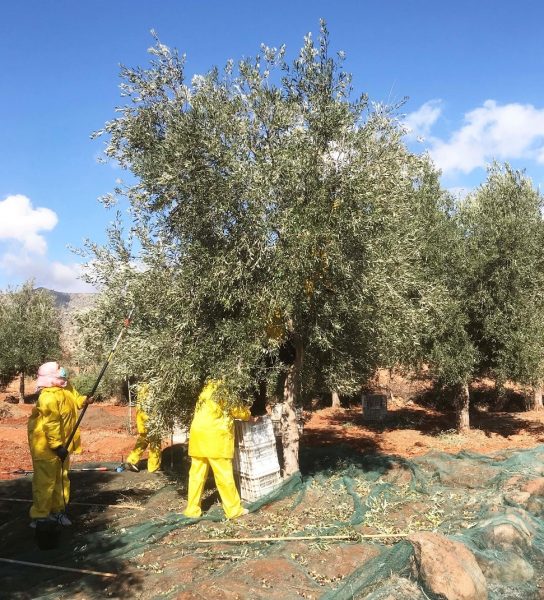
Harvesting To Maximise Polyphenols In Our Extra Virgin Olive Oil
Morocco Gold olives are harvested by hand using flexible combs. Nets and tarpaulins are placed on the ground to avoid contact between the olives and the ground.
The olives for Morocco Gold extra virgin olive oil are picked when the fruit is young and green. As the olives age on the tree, the colour of the olive changes to red and then black, the size of the olive increases thus producing more oil, but the polyphenol level decreases. There is a great deal of expertise within the farming community where we source our oil to ensure that the harvest is collected at the optimum time to maximise the polyphenol level.
Aerated boxes are used for the immediate transport of the harvested olives from the orchard to the crushing unit. On receipt, the olives are checked to ensure their quality, in particular colour and appearance, any defective or malformed olives.
The olives will then pass through a stripper to removes any impurities. They are then washed and drained before processing. Leaf stripping and washing eliminate impurities, whether of vegetable origin such as leaves, twigs or mineral matter such as dust, earth, stones and other solids. Washing not only improves the quality of the product but also extraction efficiency.
Extraction of Extra Virgin Olive Oil From Our Precious Olives
Extraction of oil is carried out in a two-phase continuous process. This minimizes handling of the olives and maintains strict control of hygiene.
Grinding of the olives is carried out using a metal hammer mill which is made of stainless steel. The paste obtained then undergoes a kneading or malaxation process which is the fundamental operation to separate the solid and liquid phases. This kneading operation is carried out for 40 to 50 minutes at temperatures not exceeding 28 ° C. In this way, the extracted oil may be labeled: cold-extracted oil or cold pressed oil.
The well-kneaded dough is sent to a horizontal decanter where the continuous and simultaneous separation of the oil and wet cakes is achieved by a combination of centrifugal force and of the rotation of a conveyor screw which rotates inside the bowl.
The time between harvest and pulping does not exceed 48 hours. Morocco Gold extra virgin olive oil is unfiltered to retain all its natural properties and goodness. Nothing is added or taken away so that it is the result of the soil, the sun and the rain only.
And Finally…. Morocco Gold Extra Virgin Olive Oil Gives Back To The Environment -Which Makes It So Special
Care of the environment is at the heart of the farming methods used to make Morocco Gold Extra Virgin Olive Oil. Even the left-over paste after pressing is turned into briquettes for domestic fuel in rural areas. This reduces cutting down trees for firewood and so prevents soil erosion.
Sustainability and care for the environment is carried forward into our carefully designed bottle and packaging designs which are fully recyclable with no waste.
We are delighted to bring this ethically sourced and environmentally friendly, delicious tasting ‘superfood’ from this amazing new undiscovered source to your kitchens and tables. We believe handpicked harvesting is the right way to extract our olives. Our extra virgin olive oil is high in antioxidants and polyphenols which progressively increases with each harvest.
The exceptionally high quality of Morocco Gold extra virgin olive oil is the result of care and attention to detail throughout the entire production process. This is made up of three distinct elements: The perfect soil, harvest and extraction.
Extra Virgin Olive Oil Starts From The Perfect Soil
The specific soil conditions of the Beni Mellal region, together with the mild winters and summers, caressed by hot winds from the Sahara, make ideal growing conditions for Morocco Gold olives. The existence of centenary trees and traditional presses (maasras) testify to the longevity of olive cultivation in this area.
Extra Virgin Olive Oil From Cenenary Trees, Maasras
Ground work and tillage is carried out once or twice a year: once in winter to facilitate rainwater infiltration into the soil, and in spring to rotate the soil.
Planting is done at the beginning of spring. There is some permitted intercropping of cereals, also almond trees, that contribute to the hint of almonds in Morocco Gold.
In addition to natural rainfall, which is generally sufficient in the geographical area, trees are irrigated as needed during the period of vegetation of the olive tree, normally until the end of September.
The Moroccan Way To Harvest Extra Virgin Olive Oil
Fruiting sizing and assessment of the maturity of the olive is carried out annually. The planned date of harvest is agreed based on the maturity index of the olives, also the generations of experience of the olive farmers. Harvesting will then normally take place between the end of October and beginning of December.
Morocco Gold olives are harvested by hand using flexible combs. Nets and tarpaulins are placed on the ground to avoid contact between the olives and the ground.
Sources:
Breton, Catherine, André Berville. “From the Olive Flower to the Drupe: Flower Types, Pollination, Self and Inter-Compatibility and Fruit Set.” Intechopen.com. Intech. 10 April 2013. Chapter 12. Web. 25 May 2017.
G. Steven Sibbett and Louise Ferguson: Olive Production Manual, University of California, Agriculture and Natural Resources, Publication 3353, 2005. Print.
“Third Gender Identified in a Close Relative of the Olive Tree.” PHYS.ORG. Science X Network, 30 March 2010. Web. 25 May 2017
